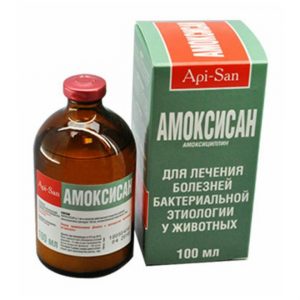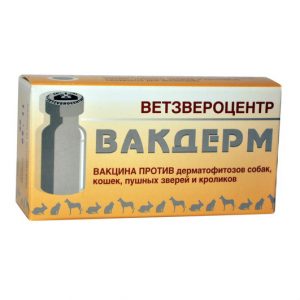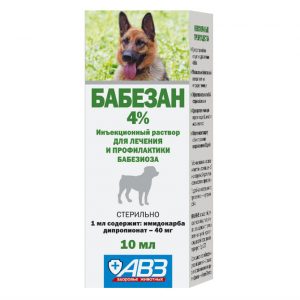Description
Pharmacological action
Enroflon 5% and 10% oral solution – an antimicrobial drug of the fluoroquinolone group.
Enrofloxacin, which is part of enroflon, belongs to the group of 3rd generation fluoroquinolones, has a wide spectrum of bactericidal action, inhibits the growth and development of most gram-positive and gram-negative microorganisms, including E. coli, Haemophilus, Klebsiella, Pasteurella, Pseudomonas, Bordetella, Campylobacter, Erysipelotrix, Corynebacterium, Staphylococcus, Streptococcus, Actinobacillus, Clostridium, Bacteroides, Fusobacterium, as well as Mycoplasma spp. Enrofloon resistance of bacteria develops relatively slowly, since the antimicrobial mechanism of enrofloxacin is associated with inhibition of the activity of the gyrase enzyme, which affects the replication of the DNA helix in a bacterial cell. The drug is well and rapidly absorbed in the gastrointestinal tract and penetrates into all organs and tissues of the body. The maximum concentration of the drug in the blood is achieved 1-2 hours after the introduction of enroflon and remains for 6 hours, and the therapeutic concentration for 24 hours. Enrofloxacin partially undergoes biotransformation, turning into ciprofloxacin. Fluoroquinolones are excreted from the body mainly unchanged with urine and bile.
Enroflon oral solution in terms of exposure to the body belongs to low-hazard substances (hazard class 4 according to GOST 12.1.007-76).
Indications
Assign for therapeutic and prophylactic purposes in case of colibacteriosis salmonellosis mycoplasmosis bronchopneumonia enteritis atrophic rhinitis enzootic pneumonia mastitis metritis agalactia syndrome in pigs other diseases of calves, lambs, pigs and other organisms atrophic rhinitis, enzootic pneumonia and mastitis-metritis-agalactia syndrome in pigs.
Contraindications
Enroflon is not allowed in animals with severe damage to the liver and kidneys, as well as with individual hypersensitivity to fluoroquinolones. During treatment, avoid prolonged exposure to animals in direct sunlight. The use of Enroflon is forbidden to laying hens, the eggs of which are intended for human consumption because enrofloxacin is excreted with eggs.
The simultaneous use of enroflon with bacteriostatic antibiotics (tetracyclines, macrolides and chloramphenicol), theophylline and steroids.
Special instructions
There were no specific effects on the first use and on withdrawal of the drug.
Slaughter for meat of animals that used enroflon, allowed no earlier than 14 days, birds – 11 days after discontinuation of the drug. Meat of animals forced to be killed before the expiration of the specified periods can be used to feed fur animals or produce meat and bone meal.
Personal preventive measures
When working with Enroflon oral solution, the general rules of personal hygiene and safety precautions provided for when working with medicines should be observed.
Composition
Enroflon 5% and 10% oral solution contains 50 ml or 100 mg Enrofloxacin, respectively, as active substance, and 12.5 and 25 mg potassium hydroxide respectively, 0.01 benzyl alcohol as excipients ml, Trilon B 10 mg, and purified water to 1 ml.
Dosage and administration
Enroflon 10% oral solution
Animal species
Dose (mg / kg)
Dose (ml 10 kg feed or water)
calves
2.5-5
0.25-0.5 srdlp srdlp -5
0.25-0.5
lambs
2.5-5
0.25-0.5
broilers, turkey
2.5-5
0.5
A bird enroflon solution is prepared based on the need for water for 1 day. During treatment, the bird receives only water containing the drug.
In salmonellosis, Enroflon 5% and 10% solution is used in a double therapeutic dose.
Side effects
When using the drug in accordance with these instructions, side effects and complications, as a rule, are not observed. With increased individual sensitivity of the animal to fluoroquinolones and the occurrence of allergic reactions, the use of Enroflon oral solution is stopped and antihistamines are prescribed.
Storage conditions
With precaution according to list B. Store the drug in the manufacturer’s sealed packaging in a dry, protected from the sun, out of reach of children. Separated from food and feed at a temperature of 5 to 25 ° C. The Expiration of the drug subject to storage conditions is 3 years from the date of manufacture.
Dosage form
oral solution




